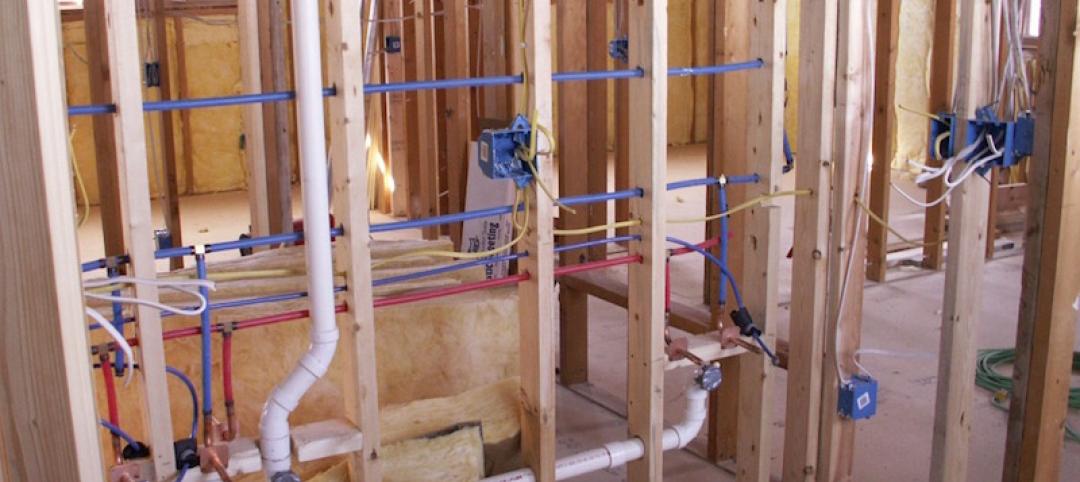For the past five years, Google has been running its own Healthy Materials program, which evaluates products for their potential health risks to employees.
That program worked fine when Google was just renting space and only had to worry about things like off gassing from furniture or paint. But when the search engine giant got into ground-up construction, “we were running into a lot of commodities” whose content wasn’t always transparent, says Drew Wenzel, Google’s campus design technical specialist. Consequently, the company wasn’t getting answers about products fast enough to make informed design, construction, and cost decisions.
“We tried to do this ourselves on one big project, and then asked ourselves if there was a better way,” says Wenzel.
That better way, he believes, is the Quartz Project, a year-long collaborative effort that Google entered into with Healthy Building Network, think step (a sustainable software provider), and Flux. Quartz Project is providing what it touts to be the AEC industry’s first free and open-source initiative that brings health and environmental information on 100 building products into a single database.
“Too many design decisions are still being made without the benefit of this information,” Drew tells BD+C. This database, he explains, allows designers and engineers to incorporate the data into existing analytical and design tools.
The Quartz Project launched its database at the VERGE 2015 conference in late October. Since then, “there’s been a lot of excitement in the AEC community” about the product, says Vivian Dien, a product manager for Flux and its Quartz Project Lead. The collaborative will be giving demos of its portal at Greenbuild in Washington D.C. next week.
This database offers product profiles for 100 commonly used building materials, from acoustical ceiling panels to XPS insulation. The information for each product includes its general composition, impurities, health profile (the product’s various health risks as a percentage of its total content weight), and environmental profile (such as Cradle-to-gate LCA results, end-of-life treatment, and so forth).
Dien says Healthy Building Network did an extensive scan of existing research and information to assemble this database. HBN was also charged with vetting the information.
The main value of this database, say Dien and Wenzel, is aggregating and standardizing product data into an open-source environment. They are quick to note, though, that the Quartz Project has avoided assigning specific health risks to individual products. “The risk portion needs to be carefully thought out,” says Wenzel. “We hope that software engineers will look at this database to develop tools that can integrate this information into a Revit model to have conversations early in the design process.”
They also see this database as a “benchmark,” which can be used to understand a product’s health baseline and to track improvements.
The Quartz Project is the industry’s latest effort to bring greater transparency to product content. Other prominent groups in this arena include the Health Product Declaration Collaborative, an open-standard format for reporting material content and potential health hazards; and The Cradle-to-Cradle Institute, with its five levels of certification for products as they travel a path to meet the organization’s criteria for material health, reutilization, renewable energy and carbon management, water stewardship, and social fairness.
Wenzel views those other sources as “predominantly” for products “that are unique or highly controlled.” Whereas the primary purpose of the Quartz Project’s database, he says, is as “an early-phase design tool.”
Related Stories
Sponsored | Building Materials | Mar 20, 2017
Vinyl reveals meet increasing demand
With a tight school renovation budget and timeline, the Oak Grove Elementary cafeteria, designed by RuckPate Architects/CS2 Designs, utilized Architectural Reveals to build curving soffits with a racing stripe reveal design.
Building Materials | Mar 13, 2017
11 transmaterials highlight the coming generation of building products
Fiber-reinforced plastic, 3D-printed stone, and programmable ink tiles are a few materials coming down the pike for the AEC industry.
Building Materials | Mar 3, 2017
Perkins+Will white paper: Antimicrobial building products should be avoided whenever possible
Antimicrobial products contain ingredients that may have adverse environmental or human health impacts.
Building Materials | Feb 15, 2017
New metamaterial cools roofs without any energy consumption
The material is barely thicker than aluminum foil and can be economically manufactured for large-scale residential and commercial applications.
Sponsored | Building Materials | Jan 17, 2017
Handbook of Architectural Expansion Joints & Fire Barriers
Building Materials | Jan 9, 2017
Architects and researchers are developing new techniques for building in space
As setting foot on Mars becomes a more realistic goal, the search for how to best develop Architecture for the Red Planet is heating up.
Walls and Partitions | Dec 14, 2016
New wall system eliminates the need for most studs
The company, BamCore, says its new product can save money and quicken the framing process.
75 Top Building Products | Dec 7, 2016
101 Top Products: Building Envelope
Among the best building envelope products included in BD+C's inaugural Top 101 Products report are BASF's Neopor Plus Insulation, Dri-Design's Shadow Series Aluminum Panels, and Garland's Optimax Roof Membrane.
Building Materials | Dec 2, 2016
These are the top 10 tile trends to keep an eye on in 2017
Design styles such as bits & pieces, gritty chic, and metallics are among the ten tile trends to watch as we enter 2017.
















